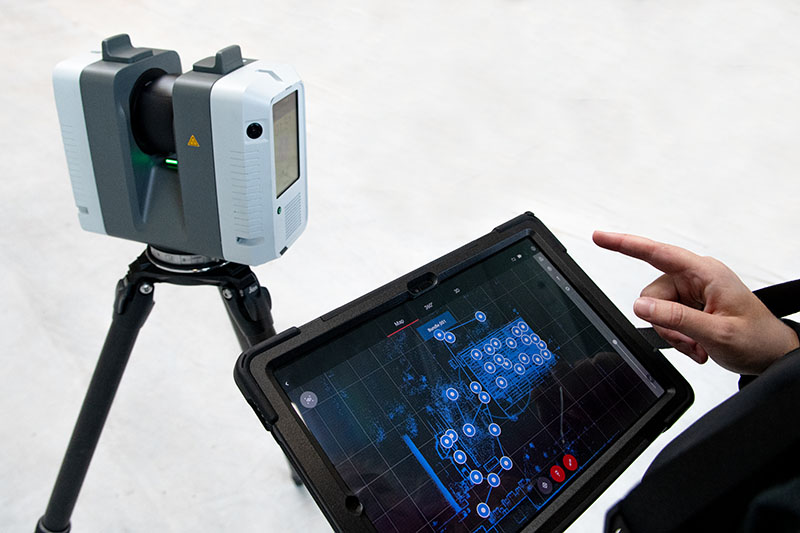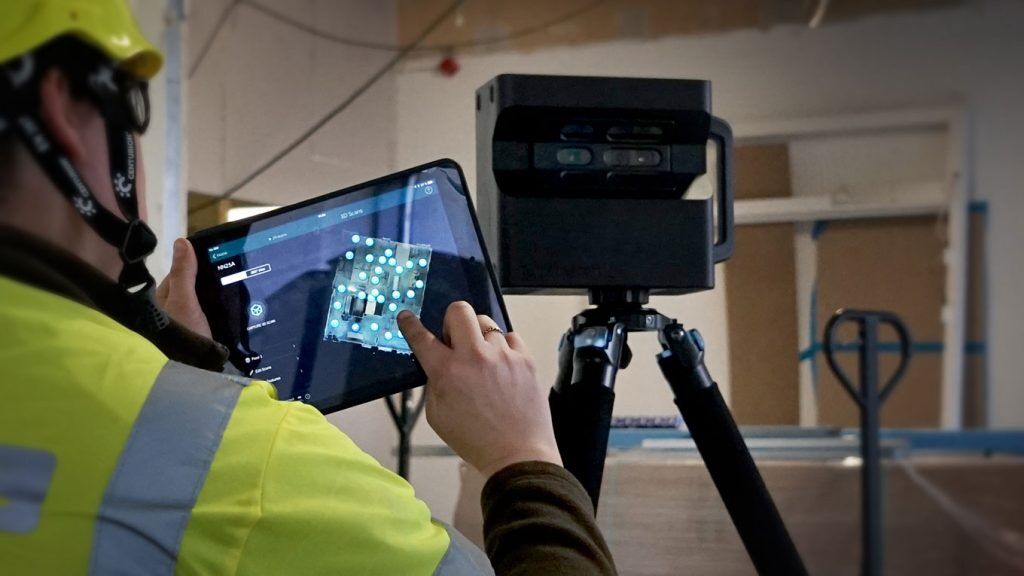How 3D Laser Scanning Changes Architectural Style and Building And Construction Projects
3D laser scanning is changing the landscape of architectural design and construction. This innovation uses exceptional precision in catching existing environments, which helps with far better job planning and implementation. It minimizes errors while boosting efficiency in different stages of growth. The implications for collaboration among architects, engineers, and other stakeholders are substantial. These improvements open up the door to brand-new layout possibilities and innovative services. What lies ahead for this evolving modern technology?
The Fundamentals of 3D Laser Scanning Modern Technology
3D laser scanning technology might appear complex, its core principles are simple and transformative for building layout. This technology utilizes laser light beams to catch exact measurements of physical structures, producing a thorough factor cloud that stands for the scanned environment. A laser scanner releases fast pulses of light, gauging the moment it takes for the light to return, which enables the estimation of distances with impressive accuracy.
The resulting point cloud can be exchanged a 3D version, giving architects with indispensable aesthetic data. This design allows specialists to analyze and adjust layout components within their projects, permitting innovative services and enhanced visualization. By utilizing 3D laser scanning, architects can much better recognize the current problems of a website, making certain that new layouts integrate with their environments. This assimilation of technology right into building style marks a substantial improvement, cultivating imagination and precision in the area.

Enhancing Accuracy and Efficiency in Architectural Projects
As building projects significantly require precision and speed, 3D laser scanning becomes a critical device in boosting both precision and efficiency. This innovation records countless information factors in a short duration, developing detailed and precise 3D versions of existing structures. The ability to obtain precise dimensions reduces the danger of errors throughout the layout phase, permitting engineers to picture their projects with unparalleled clearness.
Additionally, the fast information collection procedure reduces the time spent on-site, allowing teams to concentrate on evaluation and design renovations. With real-time information availability, changes can be made swiftly, promoting an extra structured operations. The combination of 3D laser scanning into building techniques not only boosts dimension accuracy however likewise improves the total project timeline, helping with quicker decision-making. In an industry where precision is critical, this technology stands as a transformative force, boosting the requirements of architectural layout and construction tasks.
Simplifying Collaboration Among Stakeholders
While standard architectural processes usually involve fragmented communication amongst stakeholders, 3D laser scanning promotes a more cohesive collective setting. By giving accurate, high-resolution information, this technology allows designers, engineers, contractors, and clients to operate from a unified factor of referral. The thorough visualizations generated via laser scanning remove obscurities and misconceptions, guaranteeing that all parties have access to the exact same info.
This openness boosts decision-making and motivates prompt feedback, as stakeholders can quickly envision style components and spatial connections. On top of that, the combination of 3D scanning data right into Structure Information Modeling (BIM) systems further simplifies cooperation, permitting for real-time updates and adjustments. Such seamless communication not only lessens disputes but also speeds up project timelines, as all stakeholders continue to be lined up throughout the style and building and construction stages. Eventually, 3D laser scanning changes standard workflows right into a much more collaborative and reliable process, profiting all parties included.
Unlocking Creative Opportunities in Design
By enabling architects to envision complex spatial relationships and elaborate information, 3D laser scanning reveals creative opportunities in layout. This innovation enables precise mapping of existing settings, enabling architects to discover ingenious concepts that might have formerly over at this website appeared not practical. With extremely accurate information, developers can try out non-traditional kinds and products, pressing the boundaries of conventional architecture.
The combination of 3D laser scanning right into the style process cultivates collaboration among multidisciplinary teams, motivating the exchange of ideas and improving creativity. The comprehensive visualizations created by this technology not just aid in identifying prospective layout difficulties but additionally motivate remedies that might not have been considered. As an outcome, engineers can develop extra engaging and dynamic areas that resonate with individuals while meeting functional demands. Ultimately, 3D laser scanning changes the building landscape, encouraging developers to understand their her latest blog visions with unprecedented accuracy and creative thinking.
The Future of 3D Laser Scanning in Architecture and Construction
The assimilation of 3D laser scanning into building layout not only improves imagination yet likewise establishes the stage for its developing function in the future of architecture and construction. As modern technology breakthroughs, the accuracy and efficiency of laser scanning will remain to boost, making it possible for architects and builders to produce much more complicated styles with accuracy - browse around these guys 3D Scanning. Making use of this innovation in real-time information collection will certainly facilitate far better decision-making, minimizing mistakes and simplifying workflows
Future applications may include enhanced and online fact combinations, permitting stakeholders to imagine projects in immersive atmospheres. Furthermore, as sustainability becomes a top priority, 3D laser scanning will certainly sustain the growth of energy-efficient layouts by supplying in-depth insights right into existing structures. As collaboration amongst different techniques comes to be even more important, the ability to share specific 3D designs will foster innovation and improve task outcomes. Inevitably, 3D laser scanning will certainly redefine standards in architectural layout and building techniques.
Frequently Asked Inquiries
What Is the Price of Executing 3D Laser Scanning Technology?

For how long Does a Common 3D Laser Scanning Job Take?
A regular 3D laser scanning job can take anywhere from a few hours to a number of days, relying on variables such as the task's dimension, complexity, and the level of detail required for precise data capture.
What Kinds of Projects Advantage Many From 3D Laser Scanning?
3D laser scanning advantages various tasks, especially large buildings, historical restorations, and complicated renovations. It enhances accuracy in measurements, decreases mistakes, and gives comprehensive information crucial for reliable planning and implementation in building design and building and construction.

Exist Specific Software Application Programs Required for 3D Laser Scans?
Yes, certain software programs are vital for refining 3D laser scans. 3D Scanning. Popular alternatives consist of Autodesk ReCap, Faro Scene, and Leica Cyclone, each offering special functions tailored for evaluating and visualizing checked information successfully in different tasks
How Does 3D Laser Scanning Effect Environmental Sustainability in Building?
3D laser scanning boosts ecological sustainability in building and construction by decreasing product waste, allowing precise measurements, and promoting reliable source usage. This innovation permits much better planning, reducing the eco-friendly impact of building jobs through boosted precision and effectiveness.
3D laser scanning is transforming the landscape of architectural layout and building. 3D laser scanning technology might appear complicated, its core principles are transformative and simple for architectural layout. By allowing architects to picture intricate complex details and spatial partnerships, 3D laser scanning exposes creative opportunities in style. The integration of 3D laser scanning into the style process cultivates partnership among multidisciplinary teams, motivating the exchange of ideas and improving creativity. The combination of 3D laser scanning into building layout not only boosts creativity yet likewise establishes the stage for its progressing role in the future of design and building and construction.